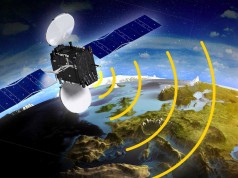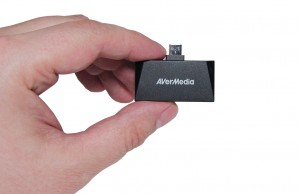The Satellite TV in Ukraine is a market no one can cope with. There are TV channels, there are satellites, there are households with installed equipment. There is even the National TV and Radio Broadcasting Council and the legal framework. All that is lacking is to arrange an income-generating business.
________________________________________
Close to DTH
DTH stands for Direct-To-Home, so-called traditional pay satellite broadcasting market. It is hard to talk about Ukrainian DTH satellite TV market, when it lacks satellite content sales. There are numerous companies that provide services of installing satellite dishes and receivers, there card sharing projects, there are competitors like terrestrial TV, cable TV and IPTV. There is also satellite broadcasting, but it is almost completely FTA (Free-To-Air), i.e. distributed from satellite for free. It turns out such the following scheme: a person buys and installs equipment for viewing satellite TV and cares about nothing else.
Today, with a single satellite dish the Ukrainians can watch up to 80 free Ukrainian and Russian channels. By the way, the Americans conducted an interesting study and found out that Russian television increased the number of voters for the pro-Russian party in the presidential and parliamentary elections. This regards the issue of the country’s information security.
So what are the problems with DTH? It is easy to tell about missing problems on the DTH market. And there are no problems with its potential, as Ukraine has a rather large territory inhabited by a relatively small population. It means that the return on wired technologies is less, as it is necessary to pull on cable and that cable can connect a smaller number of households. Therefore, the satellite TV has a great chance for development. But that is perhaps about as mach as there is.
How the market developed
Despite the crisis in 2008, the satellite TV players looked at Ukraine with more enthusiasm. Thus, in 2010 there were 2.79 million users of satellite dishes in the country. And the satellite pay-TV subscribers amounted to near 80 thousand. In 2012, the number of households accessing satellite TV was 3.72 million. But the number of paying subscribers became around 240 thousand. In 2013, the number of satellite signal users was 4.49 million, and a year later it dropped to 4.33 million households. That decline was probably due to the fact that the statistics did not include people living in the Crimea and in the temporarily occupied areas of Donetsk and Lugansk regions. The number of paying users in 2013 was 350 thousand, and in 2014 it was 382 thousand households. At the moment of writing this article there was no statistics for 2015, but it will appear in the near future.
As early as in 2011, Onno Zonneveld, Head of Representative Office in Ukraine at the global satellite operator SES, said that the country would shut off analog TV signal by 2015, and Ukraine would come to the standard European TV viewing distribution, i.e. a third of households would watch satellite TV, a third would watch the cable TV and a third would watch the terrestrial one. Mr. Zonneveld took a pan-European distribution model, because the situation varies from country to country, sometimes essentially. For example, in Germany the market is almost completely divided between satellite and cable TV and they get 47% and 44%, respectively. The remaining 10% belong to the terrestrial TV and IPTV. In France, a large market share is gained by IPTV, i.e. 40%. The next ones are terrestrial broadcasting, i.e. 29%, satellite TV, i.e. 23% and cable TV, i.e. 8%. And, for example, in Ireland, the satellite TV occupies 62% of the market, the cable TV gains 23%, the terrestrial broadcasting gets 12%, and IPTV – 2%.
In general, the expert hit the mark, as in 2014 the types of receiving TV signal in Ukraine were distributed much the same as forecasted. Out of 16.33 million households, 34% or 5.58 million watched TV via terrestrial broadcasting. The satellite broadcasting was enjoyed by 27% or 4.33 million households. The services of cable TV were provided to 38% or 6.35 million households. The rest ones used IPTV access, i.e. it was about 160 thousand or 1% of the total. The only nuance was that Ukraine did not shut off the analog broadcasting and 4.6 million households went on enjoying it.
“Monetizing” operation
The main problem specified by all the market players, is that users are not accustomed to pay for TV. People get over spending money on telephone, electricity, utilities. But the television in the post-Soviet environment was free and everybody got accustomed to that status. Why to spend extra money, if there exists FTA-broadcasting?
Ukraine is not unique in this approach. For example, Germany sweated over making TV viewers to pay for 20 years. The households enjoyed conventional FTA-broadcasting and nobody wanted to change anything. So far in 2009, it was offered a business model of transiting to the HD content. The content providers offered two types of signal, i.e. the traditional one for free and the encoded HD-quality one to be available under an annual paid subscription. At that when buying a HD receiver, the first-year access to such a signal was free. As a result, three years later a half of the sold set-top boxes were in HD format.
By the way, Europe has virtually transited to HD, and it will be succeeded by Ultra HD or 4K TV offering even higher quality of images. In Ukraine, unfortunately nobody talks anything about Ultra HD via satellite as yet.
A high quality signal is an opportunity for all the market players, but it is worth remembering that the full run of this scheme requires users to have HD TV-sets. But not everything is so bright here. According to reports on domestic appliances sales, 1.3 million TV-sets were sold in 2014, and just only 620 thousand TV-sets were sold in 2015. Out of them, 12% of sold devices supported resolution 720 or less, 21% were 4K models. The rest of them were TV-sets with resolution 1080 or FullHD.
The key TV market players support the idea of signal encoding, as it will allow TV channels to sell content to TV providers, and these will be able to offer it in the pay-TV packages to the end user, which is TV audience. This position is shared by the StarLightMedia. And the company “Media Group Ukraine” plans to sell pay-TV packages on its own, without turning to service providers, and following this strategy the company obtained a license at the National TV and Radio Broadcasting Council and acquired the satellite operator Xtra TV.
As pointed out by Apostolos Triantafyllou, Senior Vice President of Sales at the company Eutelsat, people mostly watch free TV channels. This is a problem for businesses, but if the market moves to a satellite pay-TV model, the users will find money for it. People are ready to pay for what they think is valuable, as proved by any other European market.
On the other hand, there are heard doubts about the validity of this approach, because the pay-TV as entertainment is not an essential commodity. It means that if the audience lives below the poverty line, it will rather give up this television than pay for it.
Despite the contrary opinions, in any case the companies stand to benefit from the regulatory authority’s initiative, i.e. the National TV and Radio Broadcasting Council, which has drafted a new law “On Audiovisual Services” to replace the Law “On Television and Radio Broadcasting”. As it became known, in the new draft law the number of social TV channels was reduced to a minimum. It will assist in monetizing DTH.
The experts point out that the transition to HD is an important but not the only step in monetizing satellite TV market. There are suggestions to establish special channels for adults to be offered under an individual subscription. It is not worth forgetting sales of advertising, because if an operator has at its disposal a solvent audience, the advertisers will surely come to him.
Other problems with DTH
The TV market is a blanket and everybody hogs it. All the players stand in a highly competitive environment, and Ukraine becomes the place where the battle for viewers is carried out not by small regional companies but by the global giants with billion budgets.
It is known that Google and Apple are starting an active expansion in the IPTV market, which means that their services will be accessible, attractive, and they will help IT-giants to win the leadership all over the planet. The company Netflix, another player in the global Internet TV market with over 70 million subscribers, has recently announced its availability all over the globe, except for Syria, North Korea and the Crimea because of applicable US Government’s sanctions. And China so long remains uncovered because of its intricate internal politics, but the Netflix has been working on searching for the entry into that promising market. The experts believe that step is due to the competition with Google and Apple.
Card sharing is another problem for DTH development. The core of the problem is that encoded signal can be decoded only by a legal card holder. But if that legal holder starts sharing the pass key with other users, so they will be allowed watching encoded TV programs. The card sharing is especially widespread in Europe with a very high density of satellites covering large areas. At the same time, the broadcasters tend to obtain a license to broadcast just in one country, although it is technically possible to receive signal in other regions. Actually this fact (availability of technical capacity and lack of the legal one) encourages TV audience to deal with unauthorized viewing.
There are problems with equipment supporting the system of receiving encoded signal from satellites. If it is accessed through a special card, then there appears a threat of card sharing. The users can be offered special “chipped” equipment, but this limits the range of available receivers, i.e. users may not agree to buy another black box. Moreover, it should be taken into account that in Ukraine there are installed some 4.5 million units with a card access. So it needs to work with this audience.
It should be also kept in mind the coming generation, which becomes an active content consumer, but with a few key features. The so-called “Generation Z” prefers mobile devices like tablets or Smartphones to TV-sets and displays. They are not interested in TV guides, preferring to watch video whenever they want. Yes, they are 16 years old at most so long, but in two or three years they will significantly affect the rules of TV content consumption. These features should be taken into account today, for not to become a technologically backward platform tomorrow, like the terrestrial TV is for the time being.
Suppliers of satellite TV in Ukraine
The most stable licensed satellite pay-TV provider is Viasat, a unit of the international media holding Modern Times Group, which operates in the field of terrestrial TV, DTH, radio broadcasting and content production. The provider has been operating in Ukraine since 2008. The Viasat’s subscribers enjoy the option of receiving up to a thousand of TV channels from around the world. The territory of Ukraine is served by the satellite Astra 4A with DVB-S2 signal standard. At present, the company has over 200 million subscribers. The company keeps on increasing its customer base and offers a variety of connection formats, for instance it offers to rent a dish and tuner. In this case the one-time connection payment will cost UAH 1097 and the monthly fee will be UAH 298 including equipment rental.
Xtra TV is a DTH provider, which first left the satellite TV market, and then came back after less than six months. In the summer of 2015 it was issued a statement that Xtra TV had closed its projects, and in summer the platform’s new owner “Media Group Ukraine” obtained a DTH-provider license. The company’s portfolio incorporates pay TV channels “Football 1” and “Football 2”, as well as over 300 European and more than 60 Ukrainian and CIS TV channels in free access. The access card cost is UAH 249, and the monthly subscription fee is UAH 49 (for the package of two channels “Football 1” and “Football 2”) and UAH 1 (for the package of three channels “1 Auto TV”, English Club TV and English Club HD). The number of subscribers amounted to near 150 thousand as in October 2014. If we talk about the current situation, so according to an independent media expert Alexander Glushchenko, the number of Xtra TV’s official subscribers does not exceed 1 thousand.
Another DTH market player is the company “NTV-Plus Ukraine”. According to experts, the company made several unsuccessful marketing ploys and lost significant audience. According to various estimates, the “NTV-Plus Ukraine” has some 20 thousand subscribers. The connection cost when buying a card is UAH 422, and the largest package of channels will cost UAH 129 per month.
In 2015, its entry into the Ukrainian market was announced by the company Eutelsat. Especially for servicing Ukraine the company puts into orbit the satellite Eutelsat E9B, which will offer additional capacity to Ukrainian DTH-platforms, as well as the possibility of receiving a Triple Play service, which ensures a simultaneous access to a TV signal and Internet. The company states it does not seek to create another satellite broadcasting platform and just wants to establish mutually beneficial cooperation with all the TV market players. Among others it is mentioned an option of using company’s satellites for broadcasting Ukrainian channels worldwide.
It has become recently known that at the end of January 2016 the company “Star Media TV” obtained an encoded satellite broadcasting license at the National TV and Radio Broadcasting Council for the channel “Star Cinema”. It is announced that the channel’s airtime will be composed of foreign and national content at 50/50. It is expected that the channel will operate under a subscription model, without advertising and collecting money for its activities from providers, or from selling access cards. The members of the National Broadcasting Council expressed their doubts about the viability of that approach, because in addition to the “card” approach, the future operator would use the poorest encoding type BISS-Code.
Earlier, Ukraine had such operators as the MYtv, which stopped its activities in 2012. The company “Poverkhnost” went bankrupt in 2011, and in 2014 another satellite TV provider “Lybid TV” ceased providing services due to debts.
Results
There is significant number of households in Ukraine, which watch satellite TV without paying for it. The key market players share the same opinion that it is necessary to reduce substantially the number of free channels, to encode other channels and to offer users an alternative whether to get large number of HD programs and movies for a small monthly subscription fee, or to watch a limited so-called social package of channels in the poorer quality. This approach worked fine in other countries, however it is important to consider regional aspects and not to make “sudden movements” for not to antagonize TV audience.
The final business model to monetize DTH TV market will be affected by a low standard of living in the country, as well as the previous negative experience of companies that dropped out of the satellite TV market. The reasons for their leaving were different, i.e. a wrong business model, bankruptcy, excessive financial burden. Nevertheless, the entry of the world’s major DTH operators into the Ukrainian market and the increased competition, not only within the satellite TV, but also by other operators of TV broadcasting like terrestrial, cable and IPTV, carry hope that in the foreseeable future there will appear several powerful national players in Ukraine. Everybody will benefit from it, i.e. content providers, service providers, government and primarily TV viewers.
















